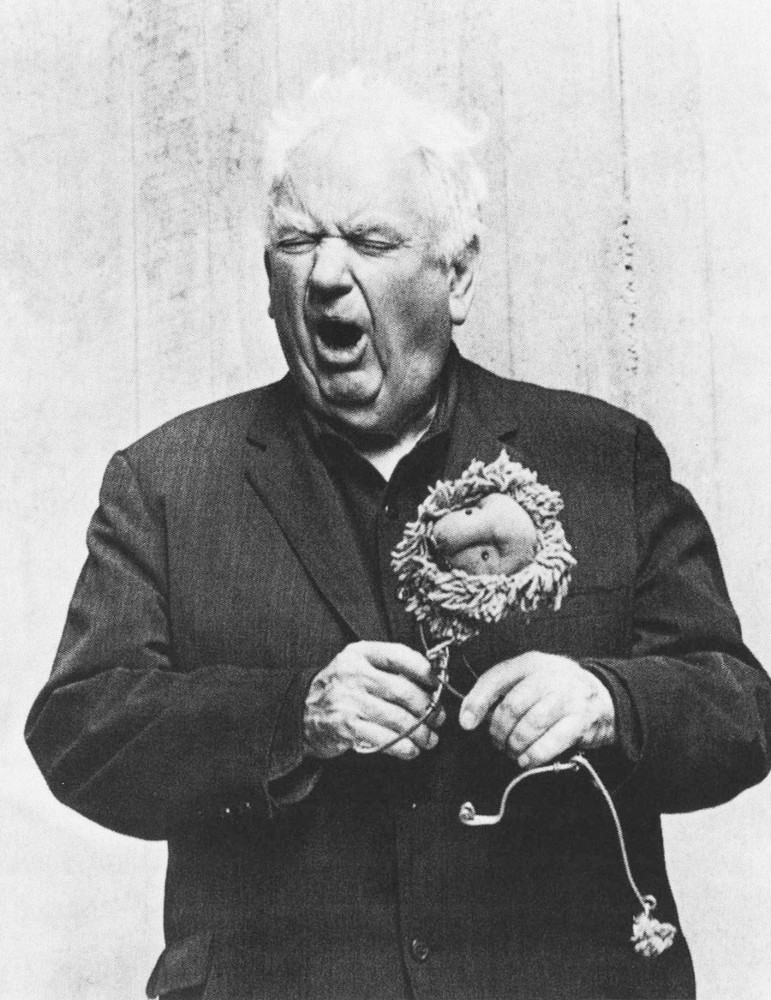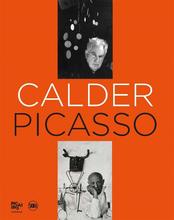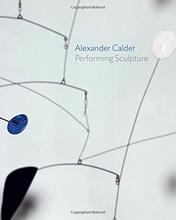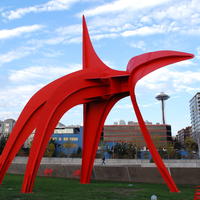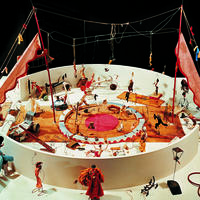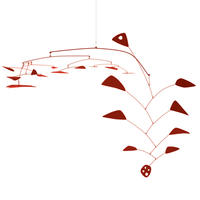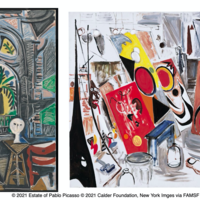More about Alexander Calder
- All
- Info
- Shop
Works by Alexander Calder

Sr. Editor
If you were really rich you might hang one of Alexander Calder's colorful mobiles above your heir's crib.
And they're equally enthralling to adults- Calder's definitely the most famous sculptor whose medium is simple wire and scrap metal. He imbues them with kinetic energy. There's something decidedly pleasing about watching the different pieces rotate around each other dreamily in the wind. Even soothing. But maybe I'm just stuck in the infancy stage...
Both his parents were artists, so it's no wonder "Sandy" (yes, that's actually his nickname) got the creative gene. He was indoctrinated at the young age of 4, when he posed nude for his father's sculpture The Man Cub, which now sits in the Metropolitan Museum of Art in New York. Slightly weird to describe a 4 year old as "posing nude," but whatever.
We know the modeling incident didn't mess him up too badly because he wasn't your typical tortured artist. His college yearbook describes him as, "...evidently always happy, or perhaps up to some joke, for his face is always wrapped up in that same mischievous, juvenile grin." (It's good to know I'm not alone in being juvenile.)
Calder started his career as a toymaker! He also put on charming "Circus" performances, where toy-sized wire wrapped clowns and lions gallivant around the stage, controlled by Calder the puppet master. Though he's less famous for these shows than his mobiles, you should remedy that by watching this video of one of Calder's "Circus" acts, because it's undeniably adorable.
His good-natured attitude also helped him make lots of famous friends, like Georgia O'Keeffe who he made jewelry for. And it didn't hurt in building a bromance with Marcel Duchamp, who was actually the one to coin the term "mobiles," changing art history and nurseries forever.
Featured Content
Here is what Wikipedia says about Alexander Calder
Alexander Calder (/ˈkɔːldər/; July 22, 1898 – November 11, 1976) was an American sculptor known both for his innovative mobiles (kinetic sculptures powered by motors or air currents) that embrace chance in their aesthetic, his static "stabiles", and his monumental public sculptures. Calder preferred not to analyze his work, saying, "Theories may be all very well for the artist himself, but they shouldn't be broadcast to other people."
Check out the full Wikipedia article about Alexander Calder

